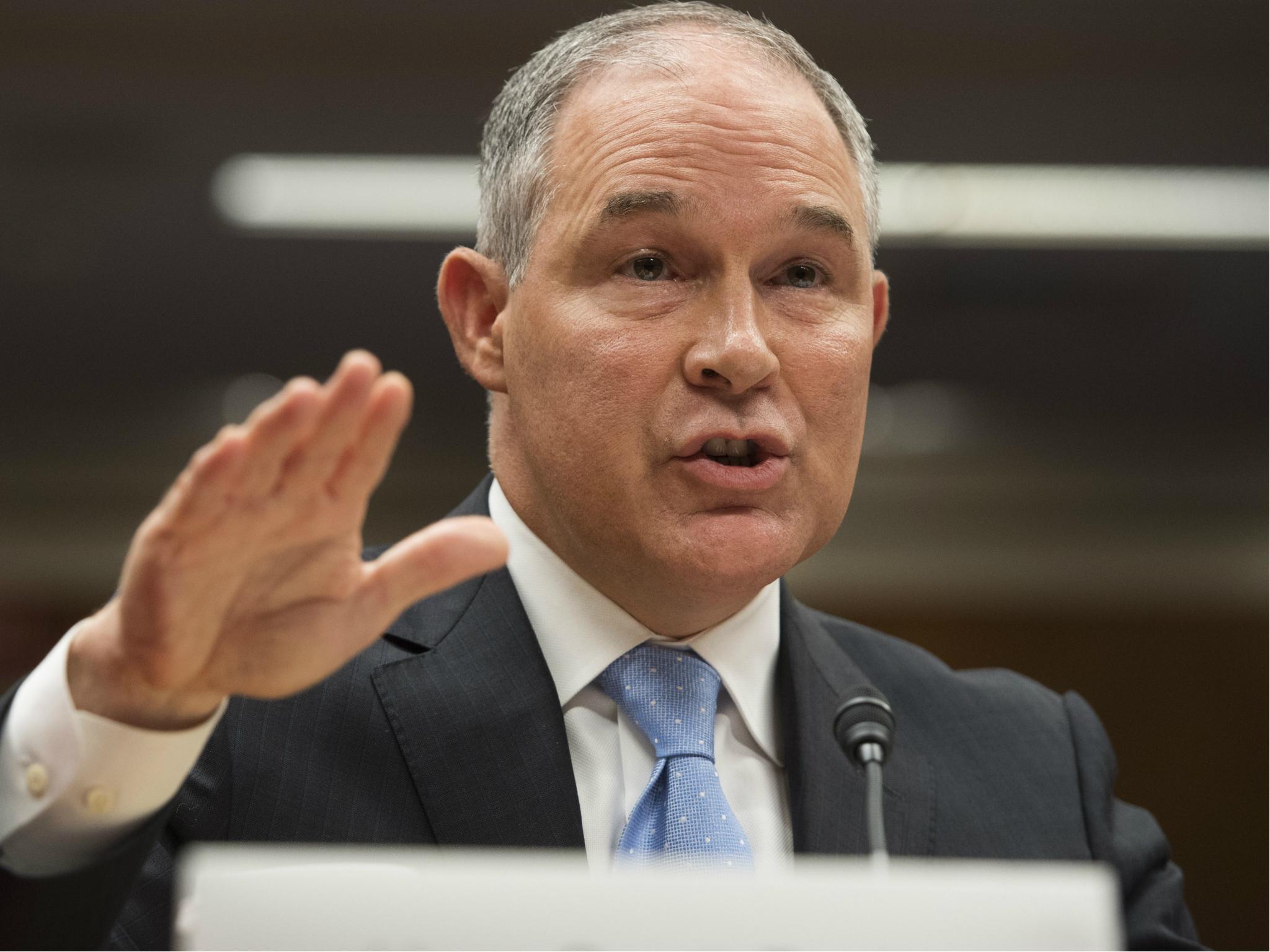Trump environment agency could reach lowest staff numbers in 30 years
Critics say the move is cause for concern given the latest spate of hurricanes and environmental disasters around the country

Your support helps us to tell the story
From reproductive rights to climate change to Big Tech, The Independent is on the ground when the story is developing. Whether it's investigating the financials of Elon Musk's pro-Trump PAC or producing our latest documentary, 'The A Word', which shines a light on the American women fighting for reproductive rights, we know how important it is to parse out the facts from the messaging.
At such a critical moment in US history, we need reporters on the ground. Your donation allows us to keep sending journalists to speak to both sides of the story.
The Independent is trusted by Americans across the entire political spectrum. And unlike many other quality news outlets, we choose not to lock Americans out of our reporting and analysis with paywalls. We believe quality journalism should be available to everyone, paid for by those who can afford it.
Your support makes all the difference.Nearly 400 people have left the Environmental Protection Agency (EPA) recently, which could push the federal agency to its lowest employment levels in three decades.
According to the Wall Street Journal, the majority of departures have come from voluntary buyouts.
Donald Trump promised repeatedly to make drastic cuts at the agency, calling into question his belief in climate change.
He also appointed Scott Pruitt to lead the agency, who does not believe that human action has a bearing on climate change.
In March 2017, Mr Trump proposed cutting the agency’s budget by nearly a third, or about 3,200 jobs according to the newspaper.
At least 1,200 people in those jobs was offered a buyout in June 2017 and a third of them - or 400 employees - took it or retired as of 31 August.
If more employees take the buyout later in the month or retire, the EPA’s employment would drop to 14,400 people which is the lowest it has been since 1998.
Under the Obama administration, the agency had nearly 16,000 employees nationwide.
Mr Pruitt said on the buyouts: “We’re proud to report that we’re reducing the size of government, protecting taxpayer dollars and staying true to our core mission of protecting the environment and American jobs.”
However, the buyouts may not ultimately save taxpayers money and some have questioned whether it is the right use of their money.
In addition, the environment may not be protected without necessary staff focusing on critical issues.
Democratic House of Representatives members Gerry Connolly, Paul Tonko, and Doris Matsui said in a statement: “the aftermath of Hurricane Harvey is a dire reminder of how important it is to have a fully staffed and funded EPA that can respond quickly to protect communities after disasters, whether from accidental releases of dangerous pollutants at chemical plants or flooding of toxic Superfund sites.”
The agency's Superfund programme is responsible for cleaning the country's most contaminated areas and responding to environmental emergencies, oil spills and natural disasters.
An EPA official told the newspaper that the buyouts were designed to protect staff jobs in disaster response, however when the Associated Press visited a Superfund site in Houston after Hurricane Harvey, no staff were there for cleanup.
The EPA said the sites were inaccessible to its response team and issued a press release attacking the Associated Press reporter who wrote the story.
Two Republican Congressman - Greg Walden and Tim Murphy - have requested details about how the buyouts are structured and how the EPA is using the money.
Mr Walden leads the House Committee which oversees the EPA and Mr Murphy serves as head of its investigative subcommittee.
Subscribe to Independent Premium to bookmark this article
Want to bookmark your favourite articles and stories to read or reference later? Start your Independent Premium subscription today.
Join our commenting forum
Join thought-provoking conversations, follow other Independent readers and see their replies
Comments